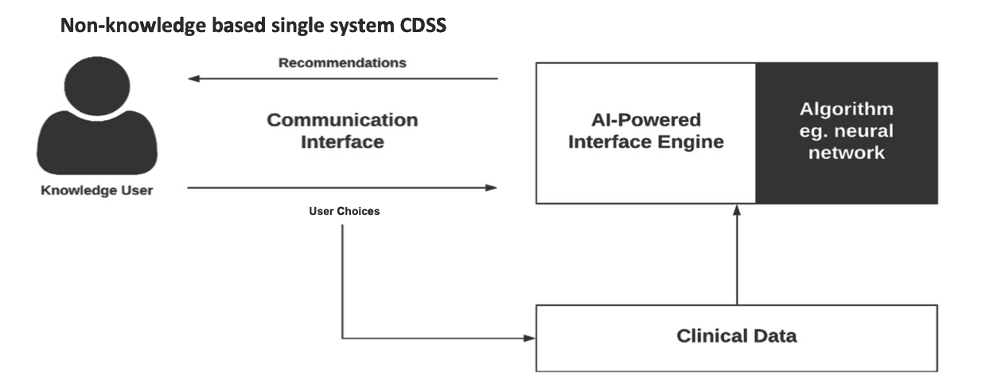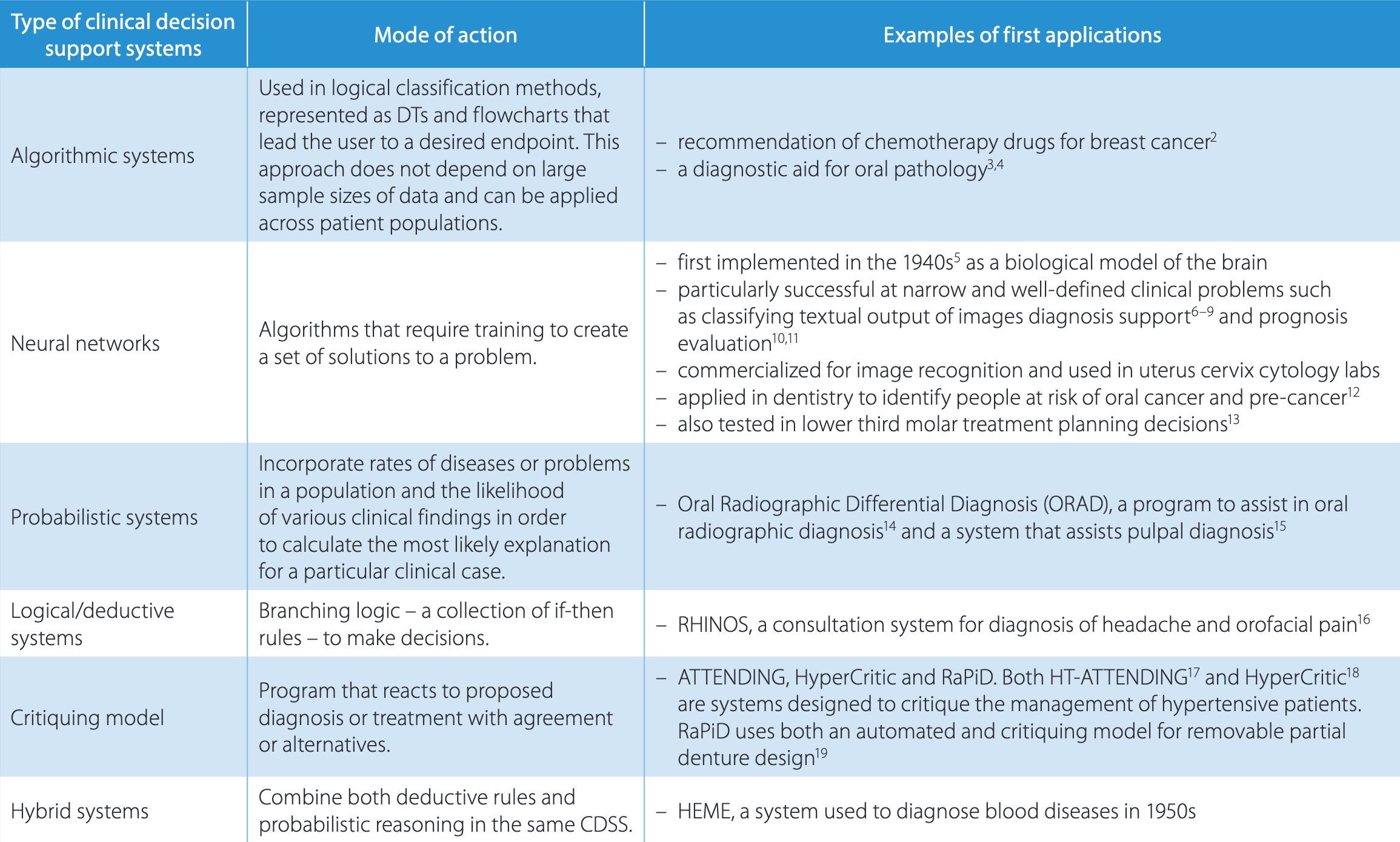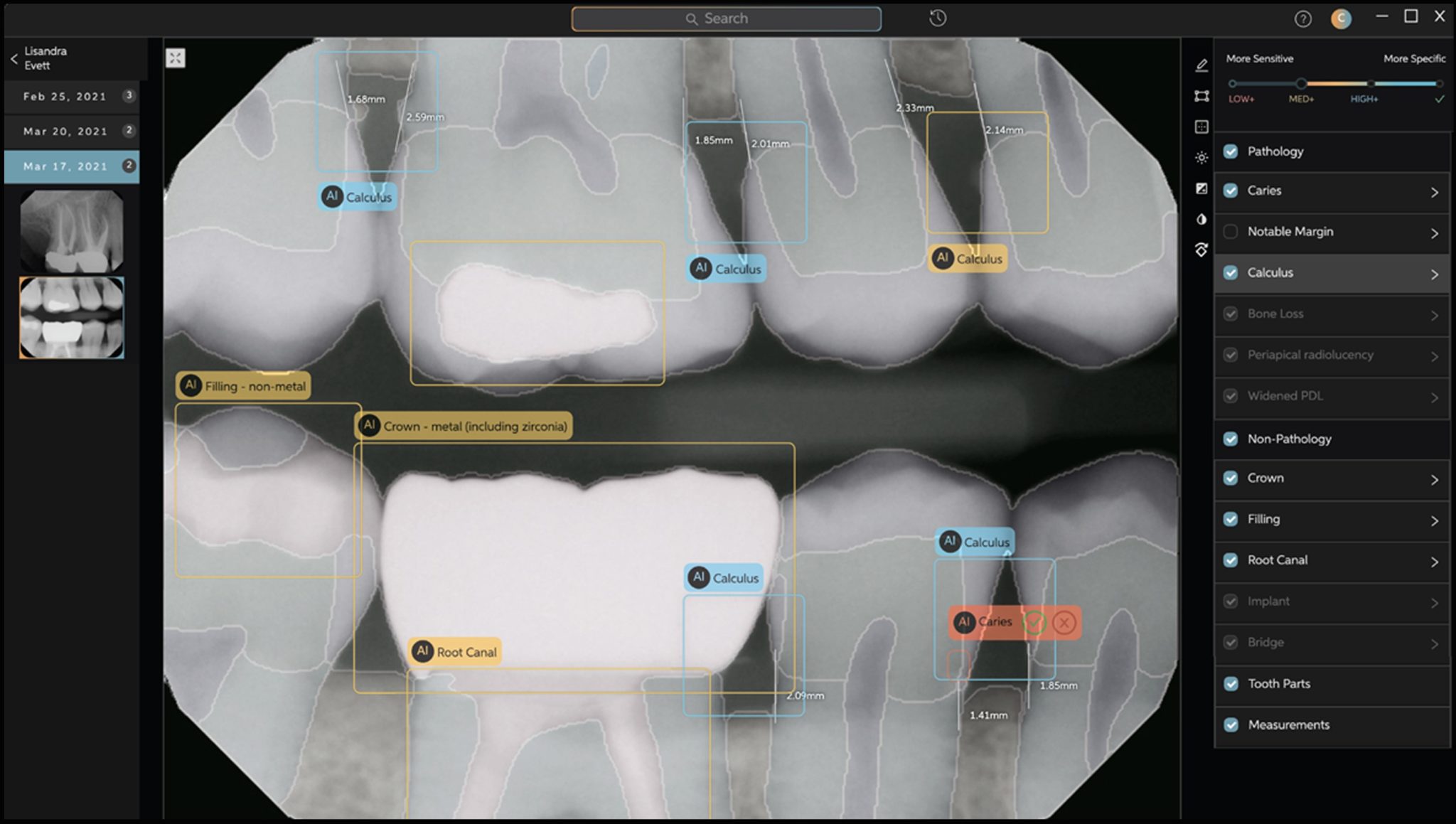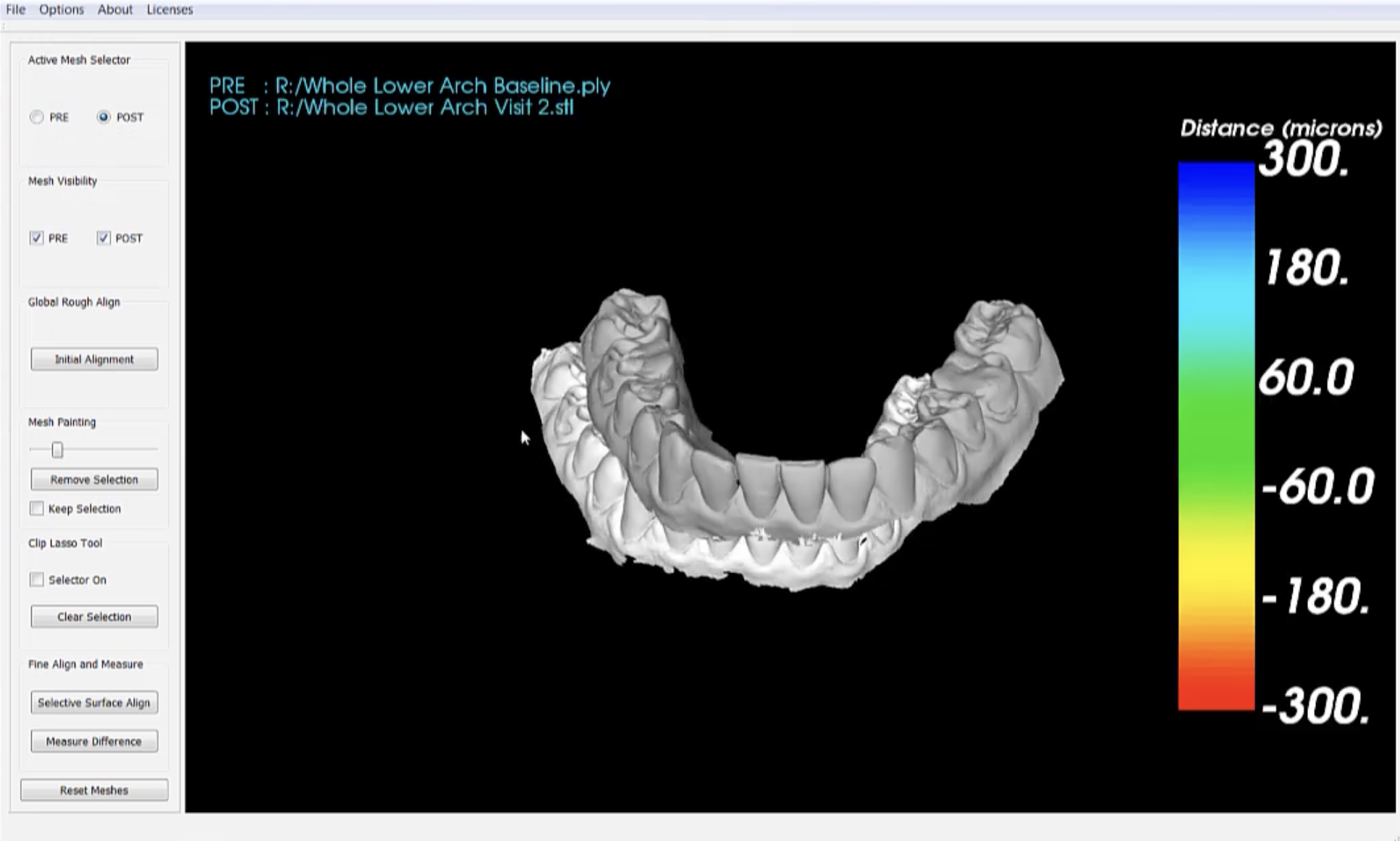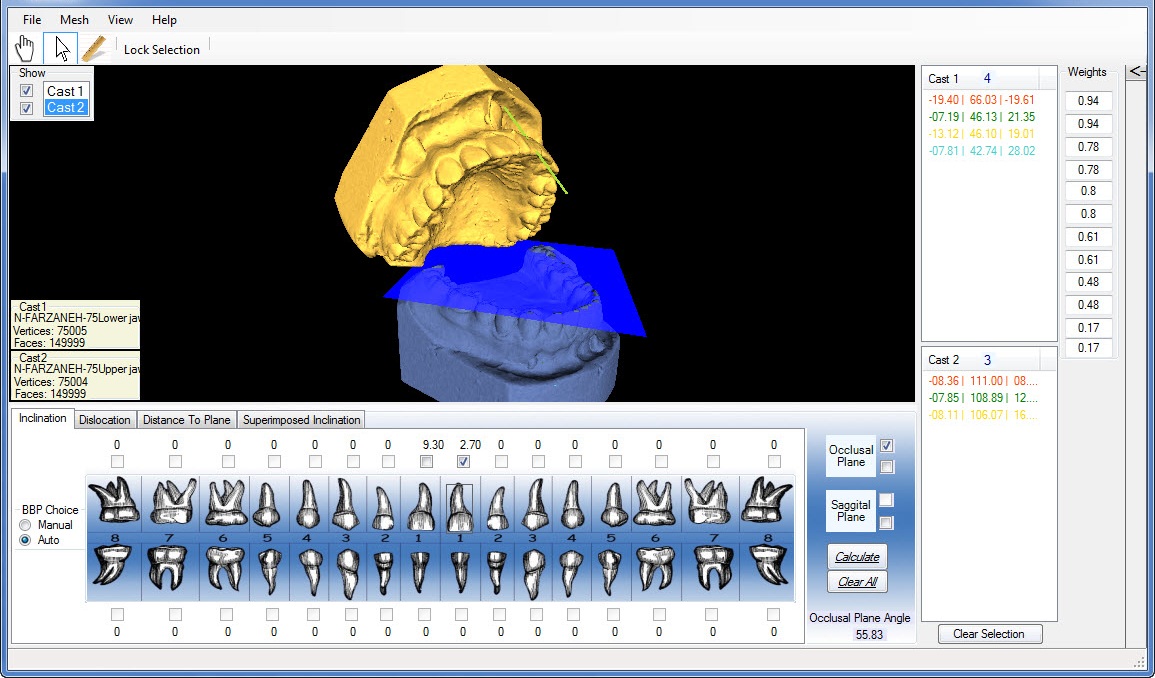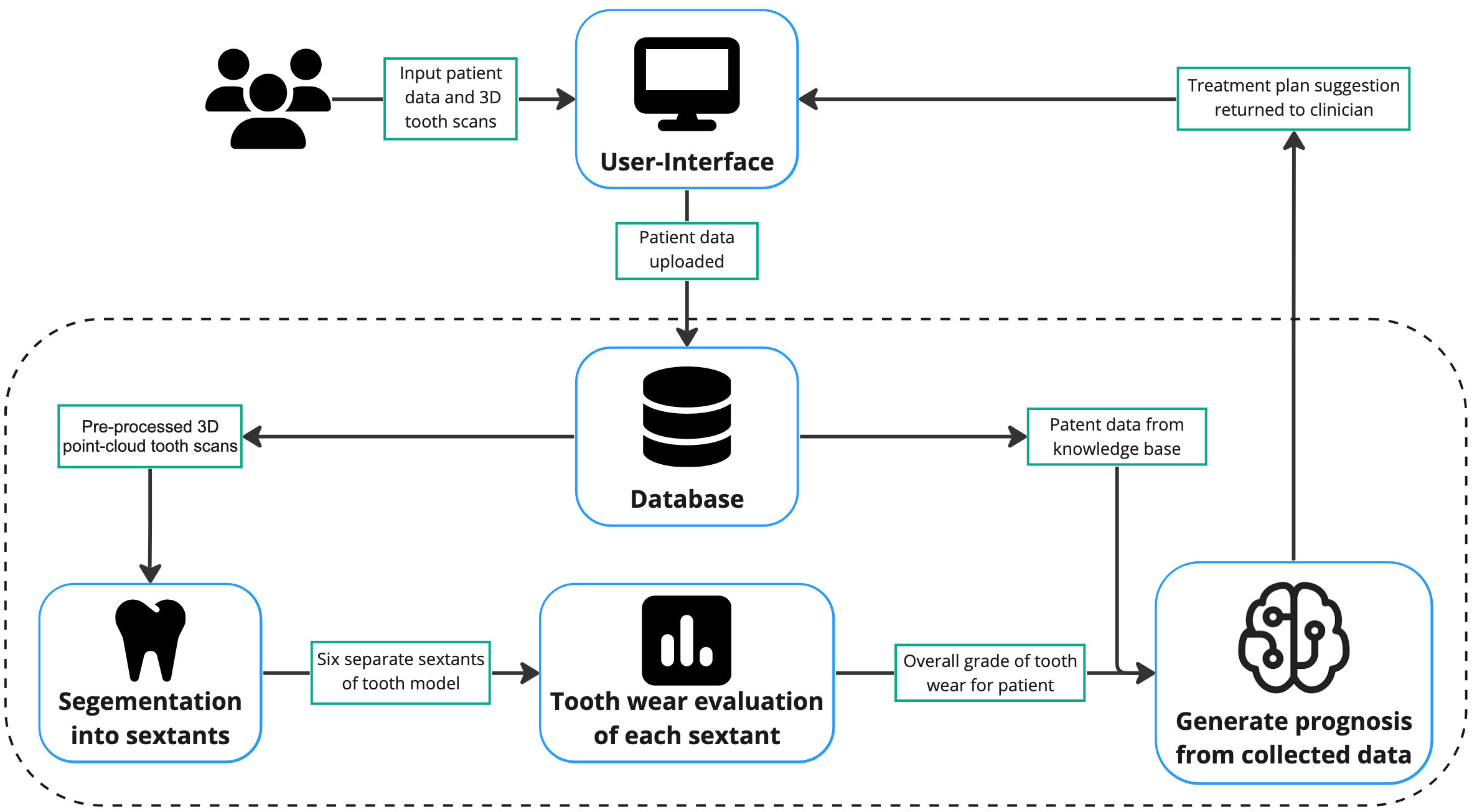After understanding the academic background of the project the next step
was to explore previous work that was done. From this we would be able
to better understand what tools to use to realise the project.
Previous Work
Throughout our search we found only three somewhat similar implementations.
The first and most thorough is Pearl AI.
It works with 2D x-ray scans and is capable of segmenting individual tooth for
the detection of pathological features. Unfortunately, this wasn't of much use
as the goal of our project is to remain in the 3D realm to take advantage of
the increased detail.
The second application is
WearCompare. It intakes 3D scans of the same teeth over different time points
and has the clinician manually select the surfaces to compare. Then it quantifies
tooth wear progression. Although this uses 3D tooth models, it requires too much
manual interaction and multiple scans. Our project has to be as automatic as possible
using Artificial Intelligence to assist clinicians.
Lastly is OrthoAid. It provides
dentists with enhanced tools for analysing 3D tooth models before and after operative
dental study models. Similarly to the previous example, it uses 3D models but does
not include any or very little automation on an AI basis. Furthermore, this app was
very technical and difficult to use.
Languages & Libraries
At first we decided to attempt creating the app with C# or C++
as our app had to be built for Windows and dealt with 3D models.
We tried implementing some of the code for the OrthoAid app to render 3D images
but failed to do so for some PLY files encoded in the binary format.
Therefore, we decided to switch to Python and find a library that can render
both STL and PLY file formats. This was convenient as the algorithmic part
of the app would also be written in Python. We decided on using Open3D for
rendering PLY files as we found some previous examples on its integration with
GUIs.
As for the GUI, at first we thought of PyQt6. However, there are licensing issues
with this library as it is under a GPL commercial license. Hence we chose
PySide2 which is identical to PyQt6 but is under a LGPL license so we could use
it without facing issues in the future.
For data storage we decided to use SQLite to deploy a local database initially.
This is because a remote database was not a high priority in our MoSCoW agreement.
Algorithms
As mentioned in the Project Research section on this page we decided on using the
TWES 2.0 grading system for the general overal algorithm structure. This includes
two sections. First the tooth wear screening phase where patient data such as age,
alcohol consumption, etc is gathered along with their tooth scans. Then the tooth
wear status phase. This is where the teeth are graded using the previously mentioned
PointNet network implemented using PyTorch to grade the teeth.
This is done by grading each sextant (1/6th of the teeth) first by grading
their respective individual teeth. Then based on the sextant graded, an overall score
is given to the wear present within the teeth. After these results are calculated,
they are used along with the patient data gathered during the first stage to suggest
a treatment plan.
